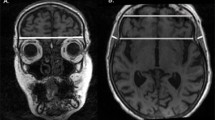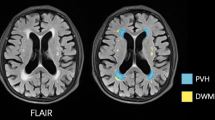Abstract
Cognitive decline is one of the most relevant signs of sarcopenia; however, it is challenging to perform tests for sarcopenia in patients with dementia. In a recent study, temporalis muscle thickness (TMT), an alternative to appendicular muscle mass (ASM), was found to be a valid index for screening sarcopenia. This study aimed to determine whether TMT correlates with ASM and evaluate the relationship between TMT and cognitive function in dementia patients. We recruited patients with a complaint of memory loss who visited the Memory Clinic of Konkuk University Medical Center between November 2014 and December 2020. Patients with probable Alzheimer’s disease (AD) without weakness were included. TMT was measured on axial T1-weighted magnetic resonance (MR) images, perpendicular to the long axis of the temporal muscle, at the orbital roof level. ASM was measured using body dual-energy X-ray absorptiometry (DXA). It was calculated as the sum of lean soft tissue mass in the arms and legs, and the value by ASM divided by height squared was used. Inter-rater reliability and intra-rater reliability were good and excellent, respectively. We found a correlation between TMT and skeletal ASM, which was obtained from cranial MR images and DXA, respectively (r = 0.379, p = 0.001). TMT was negatively correlated with age (r = − 0.296, p = 0.014) and positively correlated with body mass index (BMI) (r = 0.303, p = 0.012). Additionally, TMT was correlated with MMSE (r = 0.350, p = 0.003). After adjusting for educational years, there was still a correlation between TMT and MMSE (r = 0.256, p = 0.038). This study demonstrated that TMT correlates with ASM and cognitive function in patients with dementia. Measuring TMT using cranial MR images could help diagnose sarcopenia accessibly and assess cognitive function in patients with dementia.


Similar content being viewed by others
References
Cruz-Jentoft AJ, Bahat G, Bauer J, Boirie Y, Bruyère O, Cederholm T, Cooper C, Landi F, Rolland Y, Sayer AA, Schneider SM, Sieber CC, Topinkova E, Vandewoude M, Visser M, Zamboni M (2019) Sarcopenia: revised European consensus on definition and diagnosis. Age Ageing 48(1):16–31. https://doi.org/10.1093/ageing/afy169
Rolland Y, Czerwinski S, Abellan Van Kan G, Morley JE, Cesari M, Onder G, Woo J, Baumgartner R, Pillard F, Boirie Y, Chumlea WM, Vellas B (2008) Sarcopenia: its assessment, etiology, pathogenesis, consequences and future perspectives. J Nutr Health Aging 12(7):433–450. https://doi.org/10.1007/bf02982704
Pizzimenti M, Meyer A, Charles AL, Giannini M, Chakfé N, Lejay A, Geny B (2020) Sarcopenia and peripheral arterial disease: a systematic review. J Cachexia Sarcopenia Muscle 11(4):866–886. https://doi.org/10.1002/jcsm.12587
Ooi PH, Hager A, Mazurak VC, Dajani K, Bhargava R, Gilmour SM, Mager DR (2019) Sarcopenia in chronic liver disease: impact on outcomes. Liver Transplant 25(9):1422–1438. https://doi.org/10.1002/lt.25591
Zhang H, Lin S, Gao T, Zhong F, Cai J, Sun Y, Ma A (2018) Association between sarcopenia and metabolic syndrome in middle-aged and older non-obese adults: a systematic review and meta-analysis. Nutrients 10(3). https://doi.org/10.3390/nu10030364
Moorthi RN, Avin KG (2017) Clinical relevance of sarcopenia in chronic kidney disease. Curr Opin Nephrol Hypertens 26(3):219–228. https://doi.org/10.1097/mnh.0000000000000318
Landi F, Cruz-Jentoft AJ, Liperoti R, Russo A, Giovannini S, Tosato M, Capoluongo E, Bernabei R, Onder G (2013) Sarcopenia and mortality risk in frail older persons aged 80 years and older: results from ilSIRENTE study. Age Ageing 42(2):203–209. https://doi.org/10.1093/ageing/afs194
Giglio J, Kamimura MA, Lamarca F, Rodrigues J, Santin F, Avesani CM (2018) Association of sarcopenia with nutritional parameters, quality of life, hospitalization, and mortality rates of elderly patients on hemodialysis. J Renal Nutr 28(3):197–207. https://doi.org/10.1053/j.jrn.2017.12.003
Beaudart C, Zaaria M, Pasleau F, Reginster JY, Bruyère O (2017) Health outcomes of sarcopenia: a systematic review and meta-analysis. PLoS ONE 12(1):e0169548. https://doi.org/10.1371/journal.pone.0169548
Steffl M, Sima J, Shiells K, Holmerova I (2017) The increase in health care costs associated with muscle weakness in older people without long-term illnesses in the Czech Republic: results from the Survey of Health, Ageing and Retirement in Europe (SHARE). Clin Interv Aging 12:2003–2007. https://doi.org/10.2147/cia.s150826
Drudi LM, Phung K, Ades M, Zuckerman J, Mullie L, Steinmetz OK, Obrand DI, Afilalo J (2016) Psoas muscle area predicts all-cause mortality after endovascular and open aortic aneurysm repair. Eur J Vasc Endovasc Surg 52(6):764–769. https://doi.org/10.1016/j.ejvs.2016.09.011
Muglia R, Simonelli M, Pessina F, Morenghi E, Navarria P, Persico P, Lorenzi E, Dipasquale A, Grimaldi M, Scorsetti M, Santoro A, Politi LS (2020) Prognostic relevance of temporal muscle thickness as a marker of sarcopenia in patients with glioblastoma at diagnosis. Eur Radiol. https://doi.org/10.1007/s00330-020-07471-8
Furtner J, Berghoff AS, Albtoush OM, Woitek R, Asenbaum U, Prayer D, Widhalm G, Gatterbauer B, Dieckmann K, Birner P, Aretin B, Bartsch R, Zielinski CC, Schöpf V, Preusser M (2017) Survival prediction using temporal muscle thickness measurements on cranial magnetic resonance images in patients with newly diagnosed brain metastases. Eur Radiol 27(8):3167–3173. https://doi.org/10.1007/s00330-016-4707-6
An G, Ahn S, Park JS, Jeun SS, Hong YK (2021) Association between temporal muscle thickness and clinical outcomes in patients with newly diagnosed glioblastoma. J Cancer Res Clin Oncol 147(3):901–909. https://doi.org/10.1007/s00432-020-03386-5
Liu F, Xing D, Zha Y, Wang L, Dong W, Li L, Gong W, Hu L (2020) Predictive value of temporal muscle thickness measurements on cranial magnetic resonance images in the prognosis of patients with primary glioblastoma. Front Neurol 11:523292. https://doi.org/10.3389/fneur.2020.523292
Chang KV, Hsu TH, Wu WT, Huang KC, Han DS (2016) Association between sarcopenia and cognitive impairment: a systematic review and meta-analysis. J Am Med Dir Assoc 17(12):1164.e1167-1164.e1115. https://doi.org/10.1016/j.jamda.2016.09.013
Scisciola L, Fontanella RA, Surina, Cataldo V, Paolisso G, Barbieri M (2021) Sarcopenia and cognitive function: role of myokines in muscle brain cross-talk. Life (Basel, Switzerland) 11(2). https://doi.org/10.3390/life11020173
Beeri MS, Leugrans SE, Delbono O, Bennett DA, Buchman AS (2021) Sarcopenia is associated with incident Alzheimer’s dementia, mild cognitive impairment, and cognitive decline. J Am Geriatr Soc 69(7):1826–1835. https://doi.org/10.1111/jgs.17206
Waite SJ, Maitland S, Thomas A, Yarnall AJ (2021) Sarcopenia and frailty in individuals with dementia: a systematic review. Arch Gerontol Geriatr 92:104268. https://doi.org/10.1016/j.archger.2020.104268
Cruz-Jentoft AJ, Bahat G, Bauer J, Boirie Y, Bruyère O, Cederholm T, Cooper C, Landi F, Rolland Y, Sayer AA, Schneider SM, Sieber CC, Topinkova E, Vandewoude M, Visser M, Zamboni M, Writing Group for the European Working Group on Sarcopenia in Older People 2, EWGSOP2 tEGf (2018) Sarcopenia: revised European consensus on definition and diagnosis. Age and ageing 48(1):16–31. https://doi.org/10.1093/ageing/afy169
Studenski SA, Peters KW, Alley DE, Cawthon PM, McLean RR, Harris TB, Ferrucci L, Guralnik JM, Fragala MS, Kenny AM, Kiel DP, Kritchevsky SB, Shardell MD, Dam TT, Vassileva MT (2014) The FNIH sarcopenia project: rationale, study description, conference recommendations, and final estimates. J Gerontol A Biol Sci Med Sci 69(5):547–558. https://doi.org/10.1093/gerona/glu010
Ranganathan K, Terjimanian M, Lisiecki J, Rinkinen J, Mukkamala A, Brownley C, Buchman SR, Wang SC, Levi B (2014) Temporalis muscle morphomics: the psoas of the craniofacial skeleton. J Surg Res 186(1):246–252. https://doi.org/10.1016/j.jss.2013.07.059
Katsuki M, Suzuki Y, Kunitoki K, Sato Y, Sasaki K, Mashiyama S, Matsuoka R, Allen E, Saimaru H, Sugawara R, Hotta A, Tominaga T (2020) Temporal muscle as an indicator of sarcopenia is independently associated with hunt and Kosnik grade on admission and the modified Rankin scale score at 6 months of patients with subarachnoid hemorrhage treated by endovascular coiling. World neurosurgery 137:e526–e534. https://doi.org/10.1016/j.wneu.2020.02.033
Leitner J, Pelster S, Schöpf V, Berghoff AS, Woitek R, Asenbaum U, Nenning KH, Widhalm G, Kiesel B, Gatterbauer B, Dieckmann K, Birner P, Prayer D, Preusser M, Furtner J (2018) High correlation of temporal muscle thickness with lumbar skeletal muscle cross-sectional area in patients with brain metastases. PLoS ONE 13(11):e0207849. https://doi.org/10.1371/journal.pone.0207849
McKhann G, Drachman D, Folstein M, Katzman R, Price D, Stadlan EM (1984) Clinical diagnosis of Alzheimer’s disease: report of the NINCDS-ADRDA Work Group under the auspices of Department of Health and Human Services Task Force on Alzheimer’s Disease. Neurology 34(7):939–944. https://doi.org/10.1212/wnl.34.7.939
Moon Y, Moon WJ, Kim JO, Kwon KJ, Han SH (2019) Muscle strength is independently related to brain atrophy in patients with Alzheimer’s disease. Dement Geriatr Cogn Disord 47(4–6):306–314. https://doi.org/10.1159/000500718
Kim S, Kim JO, Kwon KJ, Han SH, Moon Y (2021) Associations of truncal body composition with cognitive status in patients with dementia. Neurol Sci 42(1):209–214. https://doi.org/10.1007/s10072-020-04503-5
Moon Y, Moon WJ, Kim JO, Kwon KJ, Han SH (2019) Role of muscle profile in Alzheimer’s disease: a 3-year longitudinal study. Eur Neurol 81(5–6):209–215. https://doi.org/10.1159/000502176
Lim S, Kim JH, Yoon JW, Kang SM, Choi SH, Park YJ, Kim KW, Lim JY, Park KS, Jang HC (2010) Sarcopenic obesity: prevalence and association with metabolic syndrome in the Korean Longitudinal Study on Health and Aging (KLoSHA). Diabetes Care 33(7):1652–1654. https://doi.org/10.2337/dc10-0107
Albano D, Messina C, Vitale J, Sconfienza LM (2020) Imaging of sarcopenia: old evidence and new insights. Eur Radiol 30(4):2199–2208. https://doi.org/10.1007/s00330-019-06573-2
Lee K, Shin Y, Huh J, Sung YS, Lee IS, Yoon KH, Kim KW (2019) Recent issues on body composition imaging for sarcopenia evaluation. Korean J Radiol 20(2):205–217. https://doi.org/10.3348/kjr.2018.0479
Kilgour AH, Ferguson KJ, Gray CD, Deary IJ, Wardlaw JM, MacLullich AM, Starr JM (2013) Neck muscle cross-sectional area, brain volume and cognition in healthy older men: a cohort study. BMC Geriatr 13:20. https://doi.org/10.1186/1471-2318-13-20
Sakai K, Katayama M, Nakajima J, Inoue S, Koizumi K, Okada S, Suga S, Nomura T, Matsuura N (2021) Temporal muscle thickness is associated with the severity of dysphagia in patients with acute stroke. Arch Gerontol Geriatr 96:104439. https://doi.org/10.1016/j.archger.2021.104439
Nozoe M, Kubo H, Kanai M, Yamamoto M, Okakita M, Suzuki H, Shimada S, Mase K (2021) Reliability and validity of measuring temporal muscle thickness as the evaluation of sarcopenia risk and the relationship with functional outcome in older patients with acute stroke. Clin Neurol Neurosurg 201:106444. https://doi.org/10.1016/j.clineuro.2020.106444
Kwon YN, Yoon SS (2017) Sarcopenia: neurological point of view. J Bone Metab 24(2):83–89
Moon JH, Moon JH, Kim KM, Choi SH, Lim S, Park KS, Kim KW, Jang HC (2016) Sarcopenia as a predictor of future cognitive impairment in older adults. J Nutr Health Aging 20(5):496–502. https://doi.org/10.1007/s12603-015-0613-x
Funding
This research was supported by the Brain Research Program of the National Research Foundation (NRF) funded by the Ministry of Science & ICT (NRF-2018M3C7A1056571).
No funding bodies were involved in the design, collection, analysis, interpretation, or writing of the manuscript. The views expressed are those of the authors.
Author information
Authors and Affiliations
Corresponding author
Ethics declarations
Ethics approval
All the patients provided written informed consent to the use of the data obtained in this study, and this study was approved through the Institutional Review Board of Konkuk University Medical Center (KUH1170159).
Additional information
Publisher’s note
Springer Nature remains neutral with regard to jurisdictional claims in published maps and institutional affiliations.
Rights and permissions
About this article
Cite this article
Cho, J., Park, M., Moon, WJ. et al. Sarcopenia in patients with dementia: correlation of temporalis muscle thickness with appendicular muscle mass. Neurol Sci 43, 3089–3095 (2022). https://doi.org/10.1007/s10072-021-05728-8
Received:
Accepted:
Published:
Issue Date:
DOI: https://doi.org/10.1007/s10072-021-05728-8




